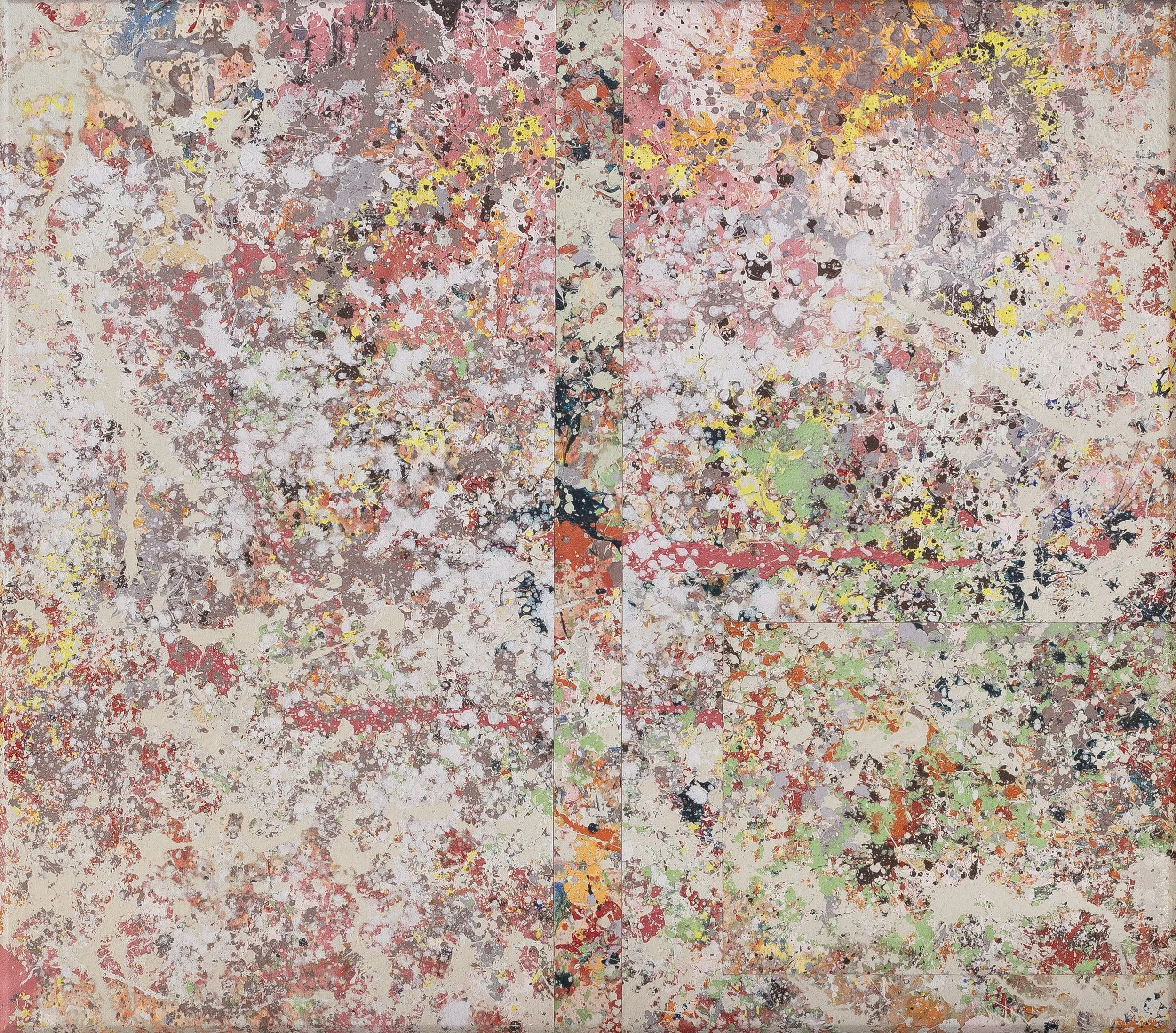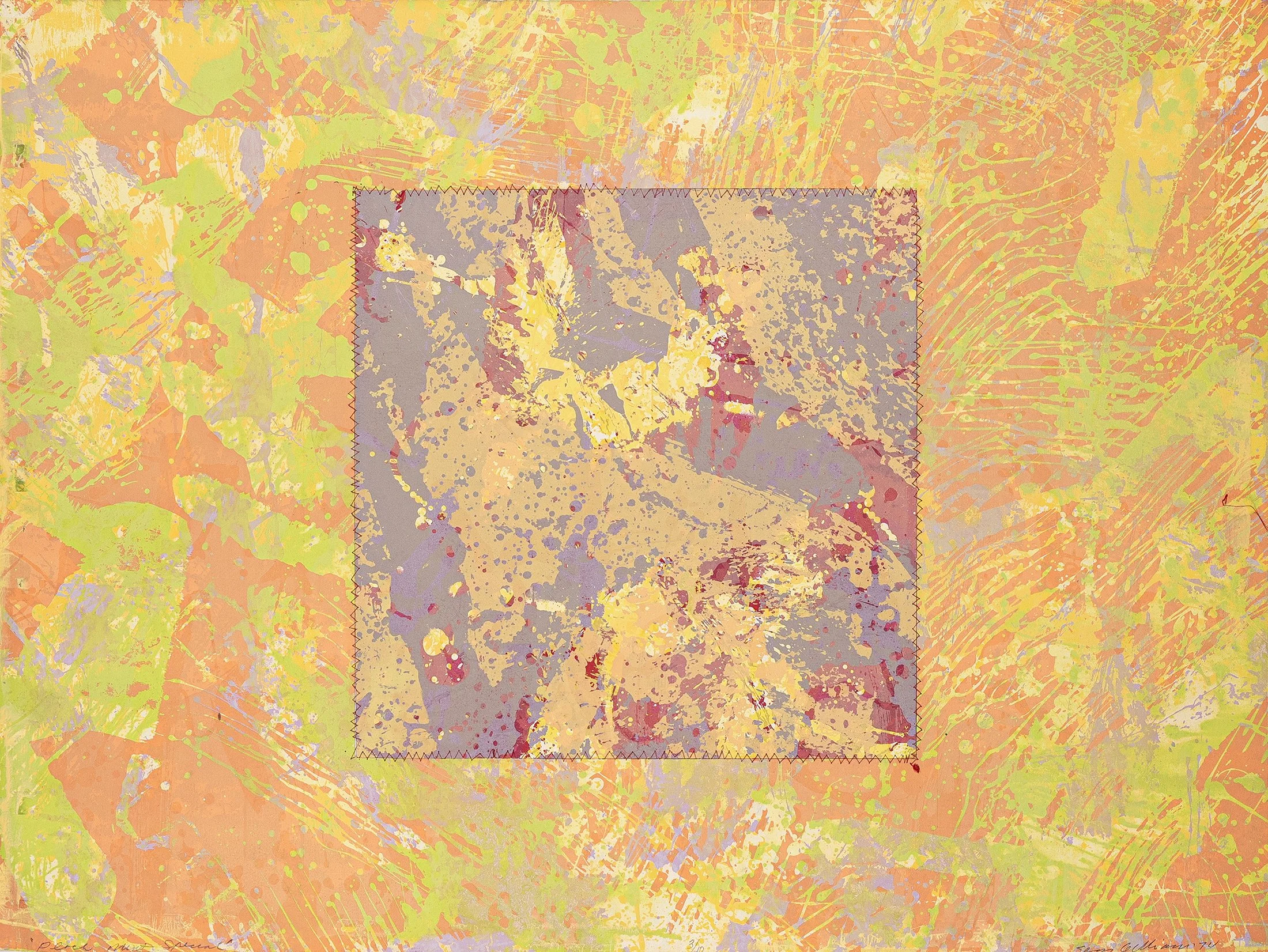
Sam
Gilliam
(1933-2022)
Hanover
1975
acrylic with overlapping canvas on beveled stretcher
48 x 54 inches
signed, dated, and titled verso
“His bevels to me are as ambitious an innovation as the manumission of the canvas from the stretcher. I think there’s something really significant in that work.”

Sam Gilliam was born in Tupelo, Mississippi in 1933. Shortly after his birth, the family (Gilliam was one of eight children) moved to Louisville, KY where he was raised. Gilliam attended college at the University of Louisville, receiving a BFA in 1955. That same year his first solo exhibition was held at the university. He went on to serve in the Army and upon his return, began working towards his MFA.
After graduation, he taught for a year in the Louisville public schools until he moved to Washington D.C., where he continued to live for the rest of his life. Gilliam continued to teach in the Washington public schools as well as the Maryland Institute College of Art, University of Maryland and Carnegie Mellon University, Pittsburgh throughout his career.
By the time Gilliam arrived in Washington D.C. in 1962, the Washington Color School had been established and included Morris Louis, Kenneth Noland, and Thomas Downing. Gilliam met and became friends with Downing. Soon, his works became large, hard-edged abstractions. His works evolved as he continued to experiment with innovative methods, taping and pouring colors, folding and staining canvases. He created Beveled-edge paintings in which he stretched the canvas on a beveled frame, so that the painting appeared to emerge from the wall on which it was hung. This is represented magnificently in Parker’s collection by the painting “Hanover.”
In 1965, he abandoned the frame and stretcher altogether and began draping and suspending his paint-stained canvases much like hanging laundry on the clothesline. Each work could be improvised and rearranged at will. The first of these was displayed at the Corcoran Gallery of Art in 1969. Gilliam received numerous public and private commissions for his draped canvases. One of the largest of these was Seahorses in 1975. This six-part work involved several hundred feet of paint-stained canvas installed along the exterior walls of two adjacent wings of the Philadelphia Museum of Art. In 1972, he represented the US in the Venice Biennale.
By 1975, Gilliam began creating dynamic geometric collages influenced by Miles Davis and John Coltrane, and later produced similar collages in monochromatic black hues. Reinvention has been a consistent component in Gilliam’s work throughout his career, and he continued to innovate, disrupt, and improvise until his passing in 2022.
Gilliam, at the Pace Gallery, where a show of new work, including “Heroines, Beyoncé, Serena and Althea,” recently opened.Photograph by D’Angelo Lovell Williams for The New Yorker
Selected Exhibitions
Solo
Sam Gilliam: Paintings 1970–1980, Studio Museum in Harlem, New York, NY, 1982
Sam Gilliam: A Major Survey, Corcoran Gallery of Art, Washington, D.C., 1993
Sam Gilliam: A Retrospective, Corcoran Gallery of Art, Washington, D.C., 2006
The Music of Color: Sam Gilliam, 1967–1973, Kunstmuseum Basel, Switzerland, 2018
Sam Gilliam: Full Circle, Hirshhorn Museum and Sculpture Garden, Washington, D.C., 2022
Group
Biennale di Venezia, Venice, Italy (first African American artist to represent the U.S. Pavilion, with William T. Wiley and Diane Disney Miller), 1972
Energy/Experimentation: Black Artists and Abstraction, 1964–1980, Studio Museum in Harlem, New York, NY, 2005
The Chemistry of Color: Contemporary African-American Artists, Columbia Museum of Art, SC, 2010
Soul of a Nation: Art in the Age of Black Power, 1963–1983 (traveled, including Tate Modern, London; Crystal Bridges, AR; Brooklyn Museum, NY), 2017-19
Edges of Ailey, Whitney Museum of American Art, 2024-2025
Peach Mint Special
1974
screen print on paper with stitched collage element
25 x 33-1/2 inches (sheet)
signed, titled, dated, and numbered 3/10
Tampa
1974
screen print
29-1/2 x 41-1/2 inches (sheet)
signed, titled, date, and numbered, 16/16